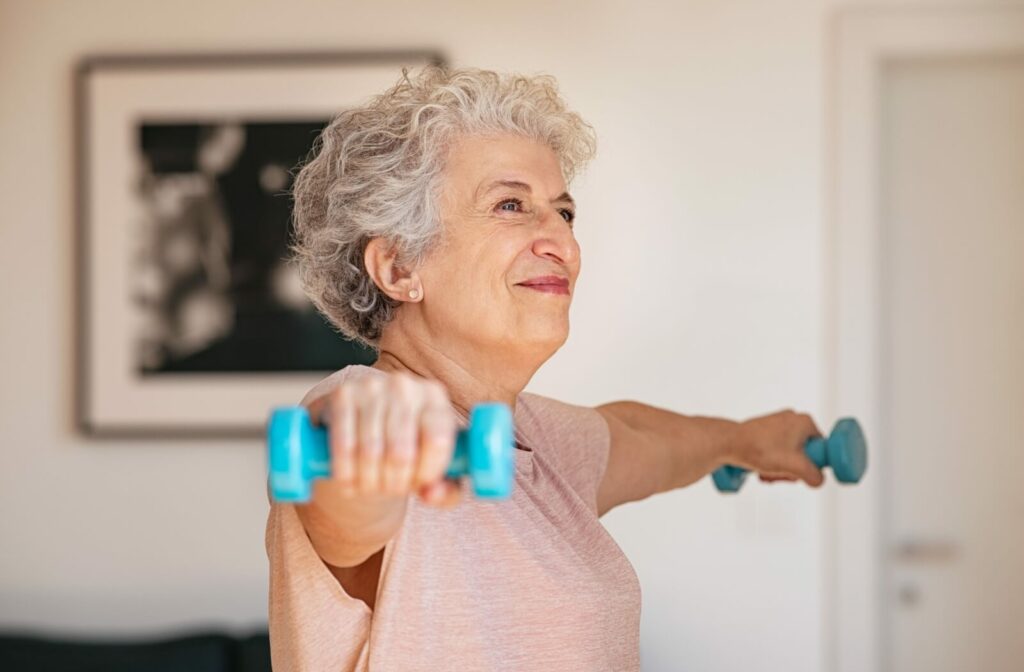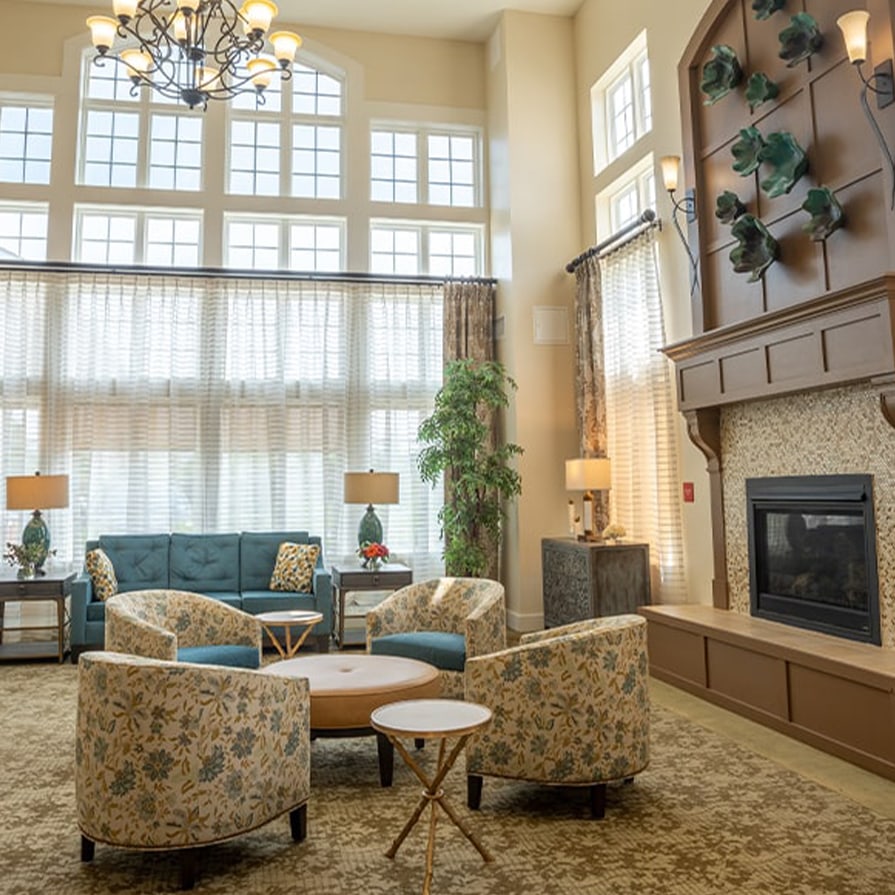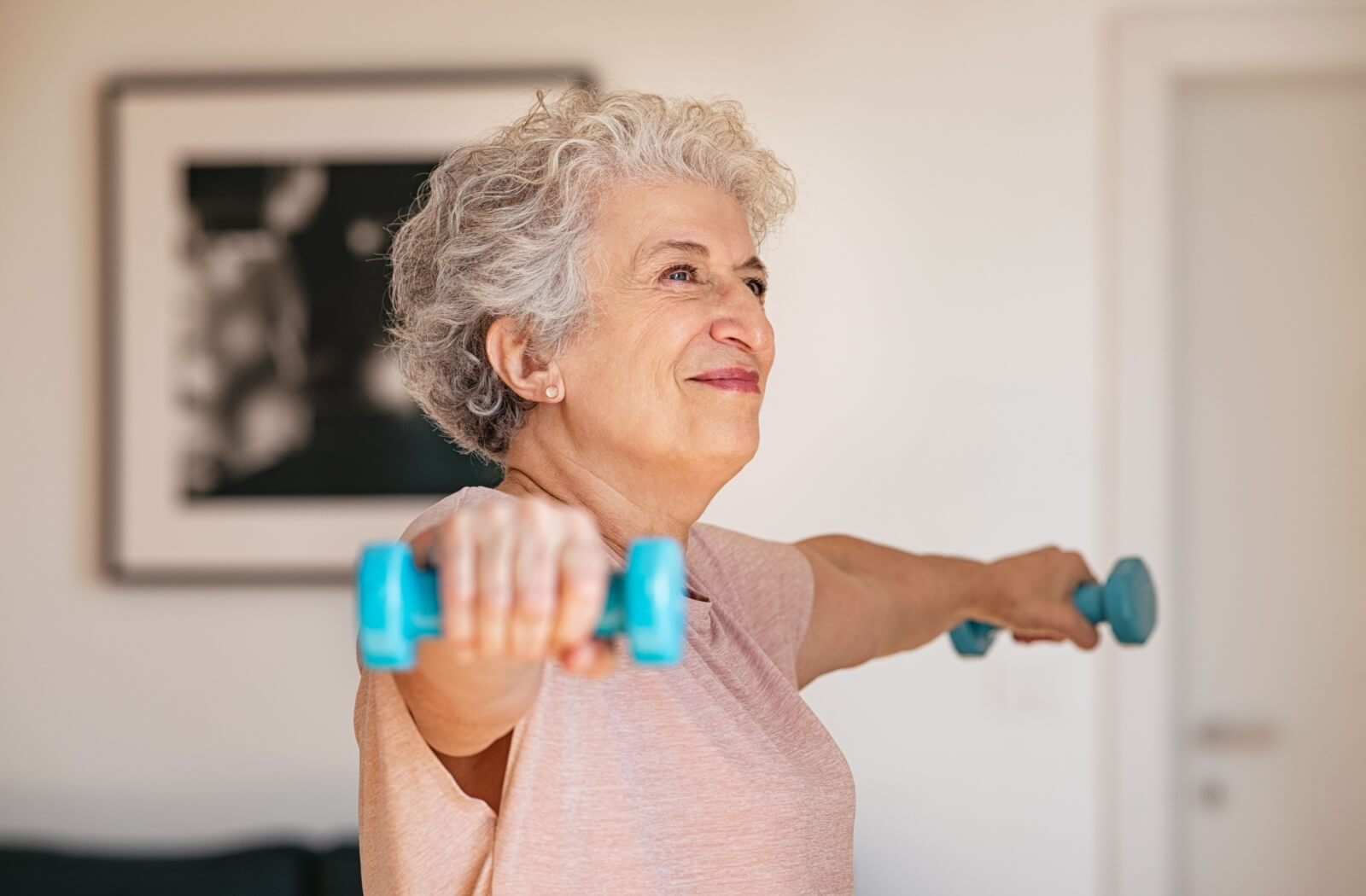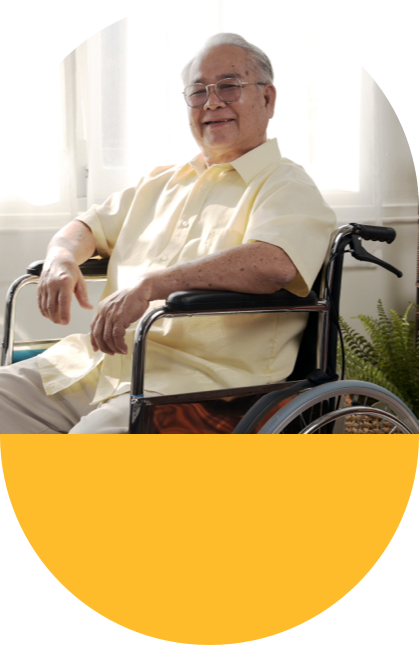Key Takeaways
- Bone density naturally decreases with age, but you can take steps to slow this process and protect your bones.
- Weight-bearing exercise, strength training, and proper nutrition play major roles in maintaining bone health.
- Creating a safe living environment and staying active are your two most powerful tools for bone protection.
- Senior living communities offer structured support for bone health through fitness programs and nutritious meals.
How to Protect Bone Density Over Time
Your bones have supported you through decades of life’s adventures. Now they need your support in return. While bone density naturally decreases as we live longer, you have more control over this process than you might think. Understanding the benefits and types of exercise for older adults can help you take the first steps toward protecting your bones. Exploring gentle, low-impact exercises provides practical options that you can start today.
You can protect and even improve your bone density after 70 through targeted exercise, smart nutrition choices, and creating a safe living environment that supports your active lifestyle.
What Happens to Your Bones as You Get Older?
Your bones are living tissue that constantly rebuilds itself throughout your life. This process, called bone remodeling, involves breaking down old bone tissue and creating new tissue to replace it. When you’re younger, your body creates new bone faster than it breaks down old bone.
Around age 30, this balance begins to shift. Your body starts breaking down bone tissue slightly faster than it can replace it. This gradual bone loss continues throughout your life, but you can significantly slow it down with the right approach.
Understanding Bone Remodeling
Think of bone remodeling like renovating your home, room by room. Your body constantly tears down old bone and builds new bone in its place. This process helps repair tiny cracks and keeps your bones strong and healthy.
As you live longer, the renovation crew gets a little slower while the demolition team maintains its pace. This creates a gradual decrease in bone density over time.
When Bone Loss Begins
Most people begin losing bone density around age 35, but the process speeds up after menopause for women and after age 70 for men. You might lose 1-2% of your bone density each year during this time.
The good news? This timeline isn’t set in stone. Your lifestyle choices can significantly slow this process and help you maintain stronger bones longer.
Why Women Face Higher Risks
Women typically have smaller, thinner bones than men to start with. They also experience a rapid drop in estrogen during menopause, which accelerates bone loss for several years.
However, both men and women can take similar steps to protect their bone health. The strategies that work don’t depend on your gender—they depend on your commitment to staying active and eating well.

What Factors Affect Your Bone Health?
Several factors influence how quickly you lose bone density and how strong your bones remain. Some factors you can’t control, like your age and genetics. Others are completely within your power to change.
Understanding these factors helps you focus your energy on the changes that will make the biggest difference for your bone health. Let’s look at what you can influence most directly.
Diet and Nutrition Choices
What you eat directly affects your bone health. Your bones need specific nutrients to stay strong, and missing these nutrients speeds up bone loss. Learning about essential nutrients for healthy aging can help you make informed dietary choices.
Calcium, vitamin D, and protein form the foundation of bone-healthy eating. You also need magnesium, vitamin K, and other nutrients that work together to keep your bones strong.
Activity Level and Exercise Habits
Your bones respond to the demands you place on them. When you regularly engage in weight-bearing activities, your bones work to stay strong enough to handle the load.
Sitting too much sends the opposite message. Your bones don’t need to stay as strong if they’re not supporting much activity, so they gradually weaken.
Lifestyle Factors You Can Control
Smoking accelerates bone loss by interfering with calcium absorption and reducing estrogen levels. Excessive alcohol consumption also weakens bones by affecting how your body absorbs and uses bone-building nutrients.
Getting enough sleep supports bone health, while chronic stress can contribute to bone loss. Managing these factors gives your bones a better environment for staying strong.
Medical Conditions and Medications
Certain medical conditions and medications can affect bone density. Conditions like diabetes, thyroid disorders, and inflammatory diseases may contribute to bone loss.
Some medications, including certain steroids and seizure medications, can also affect bone health. Talk with your doctor about how your health conditions and medications might influence your bones.
How to Increase Bone Density After 70
Exercise is one of your most powerful tools for maintaining and even building bone density after 70. The key is choosing activities that challenge your bones while staying safe and enjoyable.
You don’t need intense workouts to see benefits. Consistent, moderate activity that includes weight-bearing exercise, strength training, and balance work can make a significant difference in your bone health.
Weight-Bearing Exercises That Help
Weight-bearing exercises force your bones to work against gravity. Walking, dancing, and climbing stairs all help maintain bone density in your spine, hips, and legs.
Start with activities you enjoy and can do regularly. A 30-minute walk most days of the week provides excellent bone-building benefits while supporting your overall health.
Strength Training for Bone Health
Lifting weights or using resistance bands directly challenges your bones and muscles, strengthening them. This type of exercise can actually help you build bone density, even after 70. Resistance band exercises for older adults offer a safe, effective way to strengthen bones and muscles at home.
You don’t need heavy weights to see benefits. Light weights or resistance bands used consistently provide significant bone-building effects.
Balance and Flexibility Activities
While balance and flexibility exercises don’t directly build bone density, they help prevent falls that could lead to fractures. Tai chi combines gentle movements with mindfulness to improve balance, flexibility, and mental well-being.
These activities also help you move more confidently and maintain the mobility you need for other bone-building exercises.
Safe Exercise Tips
Start slowly and build gradually. If you’re new to exercise, begin with 10-15 minutes of activity and slowly increase your time and intensity.
Listen to your body and rest when you need to. Consistency matters more than intensity—regular moderate exercise beats occasional intense workouts for bone health.
Nutrition That Supports Strong Bones
Your bones need specific nutrients to stay strong and healthy. Getting enough of these nutrients from food sources provides the best foundation for bone health.
While supplements can help fill gaps, focusing on nutrient-rich foods gives you the full range of compounds your bones need to thrive.
Getting Enough Calcium Daily
Adults over 70 need about 1,200 mg of calcium daily. Dairy products like milk, cheese, and yogurt provide easily absorbed calcium.
Non-dairy sources include leafy greens, canned fish with bones, and fortified plant-based milks. Spreading your calcium intake throughout the day helps your body absorb it more effectively.
Vitamin D for Better Absorption
Vitamin D helps your body absorb calcium from food. Many people don’t get enough vitamin D, especially if they spend limited time outdoors.
Good food sources include fatty fish, egg yolks, and fortified foods. Your doctor can check your vitamin D levels and recommend supplements if needed.
Protein for Muscle and Bone Support
Protein provides the building blocks for both muscle and bone tissue. Getting enough protein helps maintain the muscle mass you need to stay active and support your bones. Top protein sources for older adults include lean meats, fish, eggs, dairy, plant-based proteins, nuts, and seeds.
Include protein sources at each meal. Good options include fish, poultry, beans, nuts, and dairy products.
Can You Regain Lost Bone Density Through Diet?
While you can’t completely reverse bone loss through diet alone, good nutrition can slow bone loss and support bone rebuilding. Combined with exercise, proper nutrition can help you maintain or even improve bone density.
The earlier you start focusing on bone-healthy nutrition, the better your results will be. However, it’s never too late to begin supporting your bone health through better eating habits.
Creating a Bone-Healthy Living Environment
Your living environment plays a major role in protecting your bones. A safe, supportive environment reduces your fall risk while encouraging the physical activity your bones need to stay strong.
Making smart changes to your living space and daily routines creates a foundation for lifelong bone health. These changes also support your independence and peace of mind.
Making Your Home Safer
Remove tripping hazards like loose rugs and electrical cords. Install grab bars in bathrooms and add railings to stairways. Learning about preventing falls through balance exercises and home safety can help you create a safer living environment.
Improve lighting throughout your home, especially in hallways and stairwells. Good lighting helps you see obstacles and navigate safely.
Fall Prevention Strategies
Wear supportive shoes with non-slip soles. Take your time when changing positions, especially when getting up from sitting or lying down.
Keep frequently used items within easy reach. Use step stools with handrails rather than standing on chairs to reach high places.
How Senior Living Communities Support Bone Health
Senior living communities like those offering assisted living and memory care create environments specifically designed to support bone health and overall wellness. These communities provide safe walking paths, fitness programs, and fall prevention measures built right into daily life.
Having access to on-site fitness programs and nutritious meals takes the guesswork out of maintaining bone health. You can focus on staying active and eating well without worrying about planning every detail.
Access to Nutritious Meals
Senior living communities typically provide meals planned by nutritional professionals. These meals include the calcium, vitamin D, and protein your bones need to stay healthy.
You don’t have to worry about grocery shopping, meal planning, or cooking every day. This makes it much easier to maintain the consistent, nutritious eating habits that support bone health.
Fitness Programs and Physical Activity
Many communities offer fitness programs designed specifically for older adults. These programs include the weight-bearing exercises, strength training, and balance activities that protect bone density.
Having structured programs and social support makes it easier to stay consistently active. You’re more likely to stick with exercise when you have encouragement from others and programs designed for your needs.
Taking Action to Protect Your Bones Today
Protecting your bone health doesn’t require dramatic lifestyle changes. Small, consistent actions add up to significant benefits over time.
The most important step is simply getting started. Choose one or two changes you can make this week and build from there.
When to Talk to Your Doctor
Schedule regular check-ups that include discussions about your bone health. Your doctor can assess your risk factors and recommend bone density testing if appropriate. Understanding mental health and managing emotions during health changes can help you cope with any concerns about aging and bone health.
Bring up any concerns about balance, strength, or mobility changes you’ve noticed. Early intervention can help you maintain your independence longer.
Simple Changes You Can Make Now
Start with a daily walk, even if it’s just 10 minutes around your neighborhood. Add calcium-rich foods to your meals and spend a few minutes in the sunshine each day for vitamin D.
Practice standing on one foot while holding onto a sturdy surface to improve your balance. These small changes create a foundation for stronger bones and better overall health.
Finding Support for Your Health Journey
You don’t have to navigate bone health alone. Consider whether your current living situation supports the active, healthy lifestyle your bones need.
At Juniper Village at Monroeville, we understand that maintaining bone health requires the right environment and support system. Our community offers fitness programs, nutritious meals, and a safe environment designed to help you thrive—all while providing the personalized care that matches your unique needs and preferences.
Contact us today to schedule a tour and discover how we can support your health and independence in this exciting chapter of your life.







